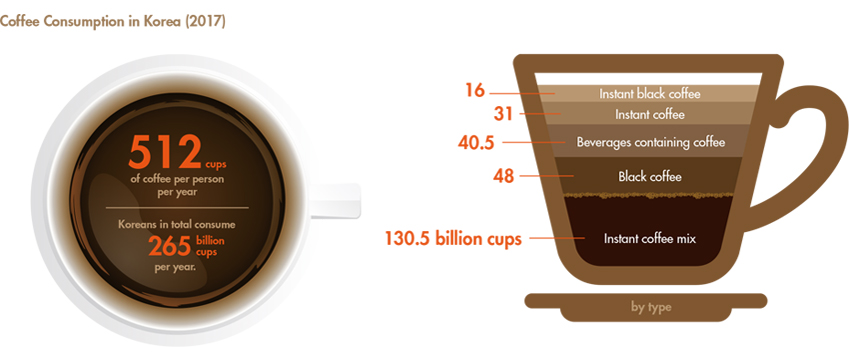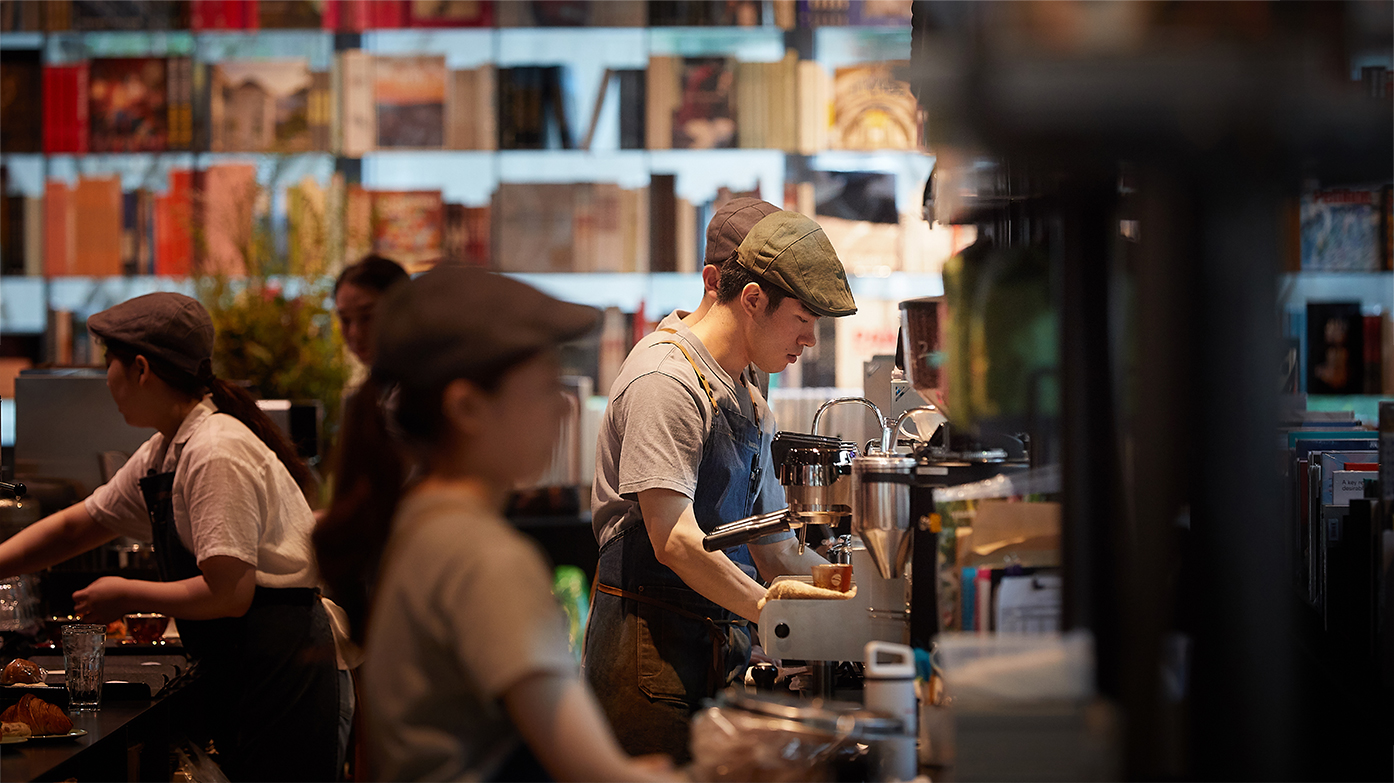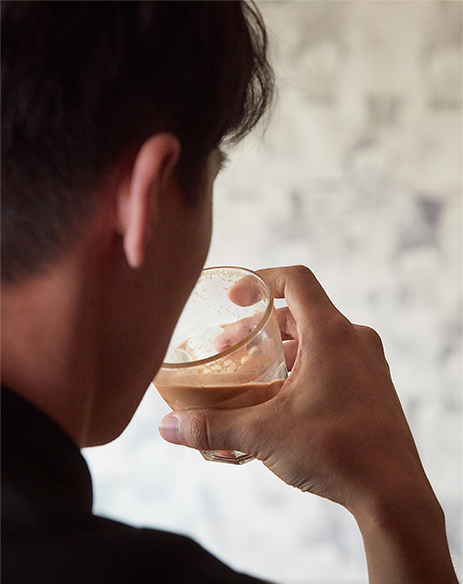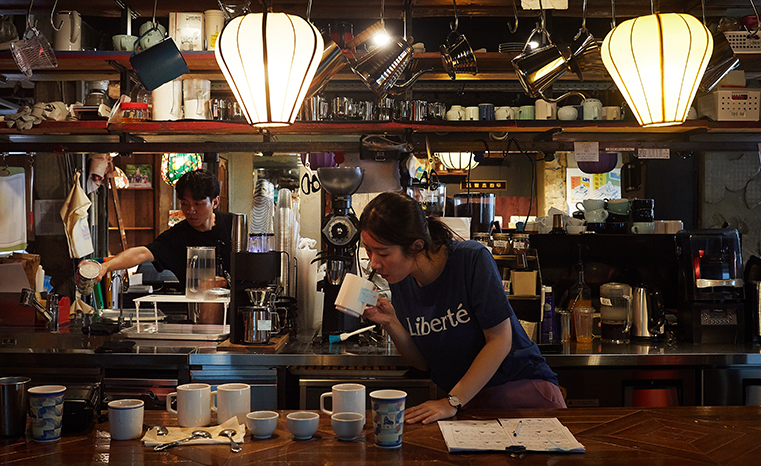
Contents





Consilience






Coffee: Withstanding the Test of Time
Unique Coffee Varieties Await in Every Alley
Korea is one of the largest consumers of coffee in the world. According to the International Coffee Organization (ICO), Korea imported 138,960 tons of green coffee in 2017, amounting to 1.5 percent of total world consumption. Valued at KRW 11.74 trillion in 2017, Korea’s coffee market grew three times over the past decade. The country has an annual coffee consumption per capita of 512 cups, and some young people drink coffee more often than water. In an age where creativity is seen as a culture in and of itself, let’s explore the appeal of coffee.
Written by Park Young-soon, president of Coffee Critics Association (CCA) and author at Coffee Humanities

Enjoying Coffee Before
the Reign of Gojong
Coffee was introduced in Korea during Joseon times. During the reign of Gojong (r. 1863-1907), the 26th Joseon monarch, coffee was served to the king and other high ranking officials and diplomats in the palace. In Chosön; the Land of the Morning Calm, the American astronomer Percival Lowell wrote, “In January 1884, a governor of the province invited me to the House of the Sleeping Waves, and we had after-dinner coffee, the latest novelty in Korea.” Horace Allen (1858-1932), who served as the court physician to Gojong, revealed in Things Korean: A Collection of Sketches and Anecdotes, Missionary and Diplomatic that the king offered coffee to Western diplomats at the Gyeongbokgung Palace in 1884.
Coffee soon became widespread among the commoners, too. The consumption of coffee was subject to national approval in countries such as Italy, France and the U.K., but it was immediately accepted in the Korean market. The Dongnip Sinmun, a daily newspaper published in Korean, featured an advertisement for Indonesian Java coffee on March 20, 1897. Another advertisement was made on Aug. 31, 1899, for a new coffee shop that Yun Yong-ju opened in front of a streetcar station in the Hongneung area. In those days, coffee shops took the names of their owners.

Tracing the History of Coffee
One interesting controversy surrounding the history of coffee in East Asia is whether Korea or Japan was first to drink it. The country that wins this debate about who has a richer coffee history may gain bragging rights in the regional coffee market, especially with the growing popularity of coffee in China.
In 1882, after Joseon opened its doors to world trade, starting with the U.S. and followed by the U.K., Germany, France and Russia, coffee naturally flowed in. Some claim that Japan’s coffee history began much earlier, in 1700, when Dutch traders lived on Dejima Island in Nagasaki Bay. However, historical records show that high-ranking officials in Japan were unfamiliar with coffee even in 1867, one year before the Meiji Restoration.

Korea, Falling in Love With Coffee
According to Korea Customs Service, the value of the Korean coffee market is estimated to be KRW 11.74 trillion.
An average 512 cups of coffee are consumed per person yearly in Korea.
In 1653, Hendrick Hamel (1630-1692) and his fellow crewmembers from the Dutch East India Company were cast ashore on Jeju Island and they were forced to stay in Joseon for 13 years. They actively engaged in trade through the international Byeokrando Port, and there is the possibility that the commodities they traded included coffee. For those interested in the history of coffee and herbal stimulants, it is worth visiting the Seoul Gyeongdong Market, the Jecheon Medicinal Herb Market and the Daejeon Herbal Medicine Street.
Some aspects of coffee drinking in Korea developed in more modern times. The practice of adding other ingredients, such as sugar or milk, originated in Egypt and France, respectively, in the 17th century. In 1976, a company in Korea became the first in the world to invent instant coffee mix packets that contained both sugar and powdered milk. You will find more than 20 types of instant coffee mix packets, and 10 varieties of cold brew coffee in cans, in convenience stores today. It’s no overstatement to say that Korea is the kingdom of instant coffee.
 For the 200,000 professionally trained baristas in Korea, running a coffee shop is more than just a simple service job.
For the 200,000 professionally trained baristas in Korea, running a coffee shop is more than just a simple service job.Korea, Home to the Highest
Number of Q-Graders
Coffee experts in the world say that consumers in Korea don’t just drink coffee, they study it. In fact, South Korea has the world’s highest number of coffee tasters and specialty coffee shops. People here account for more than half of the world’s 5,000 or so official “Q-graders,” people who are certified “coffee cuppers.” Most of them own their own coffee shops and import quality beans to offer specialty coffee to their patrons.
Before the first Starbucks chain store opened in Korea in 1999, Hollys Coffee was the leading local coffee chain, and it is still active today. There are as many as 15 large coffee chains in the country. Cafés are usually crowded with young professionals conducting business meetings during the day, and with students studying in the evenings and weekends. Spending time in such large cafes is ingrained in social fabric across the country, regardless of region.
 Lattes are one of the most popular coffee drinks in Korea.
Lattes are one of the most popular coffee drinks in Korea. The barista tests the coffee after he sorts out coffee beans for the day.
The barista tests the coffee after he sorts out coffee beans for the day.
Step into any alley, just off any main road, and you’re presented with a world of specialty coffee for true coffee aficionados. Even residential areas are filled with quaint, charming cafés. For the 200,000 professionally trained baristas in Korea, running a coffee shop is more than just a means to a livelihood. The diversity of small but strong cafés is a good reason to head to Korea for a coffee tour.
You won’t have to worry about finding a coffee shop in Korea. No matter which city you’re in, you will see at least three cafés within any 100-m radius, each with a distinct personality.
 The precision of hand dripped coffee creates a clean taste that can’t be matched.
The precision of hand dripped coffee creates a clean taste that can’t be matched.Other Articles





Consilience





Application of subscription
Sign upReaders’ Comments
GoThe event winners
Go


 September 2018
September 2018


